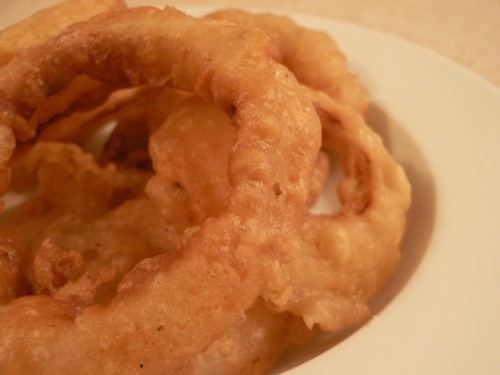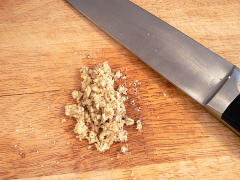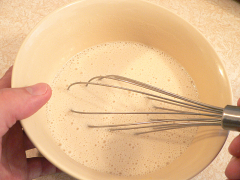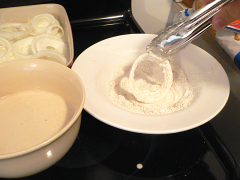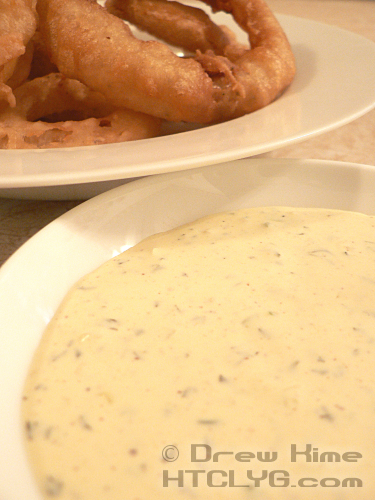After I made the tempura onion rings a bunch of people asked about doing a beer batter. I finally got around to it, and the result is what you see here. Tasty? Absolutely. Better than the tempura? Hard to say without a back-to-back comparison. But I will say this one is more work.
If you’ve done beer-battered onion rings before, I’d be happy to hear any tips you’ve got to offer.
Ingredients
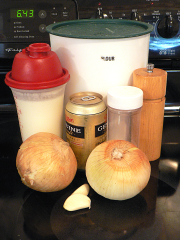
2 medium onions
12 ounces beer (one can)
1 cup white flour
2 cloves garlic
2 teaspoons salt
1/2 teaspoon black pepper
1-2 cups buttermilk
Directions
Peel the onions and slice into rings about a half-inch thick. Spread them in a pan or baking dish, and add enough buttermilk to nearly cover the onions. Toss to coat, and set them aside to soak for at least an hour before cooking.
Mince the garlic, then add the salt and pepper and mince everything together.
Add the garlic/salt/pepper mixture to the flour and combine, then add the beer.
Mix until there are no lumps of flour left.
Now comes the part where I need some tips. The basic process is to take each onion and shake off the buttermilk, dredge it in the flour mixture, then dip it in the batter, and finally into the hot oil.
After each dip, shake off the excess. You don’t want to get the wet ingredients into the dry ingredients or vice-versa. Fry on the first side until the edges are golden brown, then turn over and fry for another minute.
And that’s it.
You can do the horseradish-based dipping sauce or, like I did this time, the buttermilk ranch dressing. Tangy, zesty, thick and creamy. Perfect with the hot, sweet onion rings.
You hungry yet?
How about now?
I only did two medium onions, but by the time I was done the flour was getting pretty sticky from the buttermilk, and the batter was getting thick from all the flour. The last few rings I did were pretty thick with batter. Which was good, mind you, but I was going for onion rings, not fried dough.
Anyone who has worked in a restaurant or one of those snack trailers at a fair has done these by the bushel load. What do you do differently so you don’t gum up all the ingredients going from one kind to the next? I suspect it’s just a matter of using much larger quantities of everything. I’d like to do these again, but if I don’t get any better ideas for it, I’m going to leave out the flour dredge next time.
